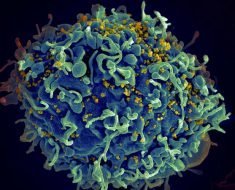
In fall 2019, Oregon Health & Science University opened a clinic to provide same-day, walk-in access to proven medications to treat opioid use disorder.
Within a few months, the COVID-19 pandemic forced the clinic to switch to virtual care.
Now, with the pandemic receding, the clinic intends to stick with its virtual care model to provide buprenorphine for patients with opioid addiction. The reason: The remote model enables the clinic to extend services to patients in every corner of Oregon. In addition, a newly published study in the journal Substance Abuse suggests that many patients prefer it.
The clinic, which prescribes buprenorphine, also known under the trade name Suboxone, remains focused on maintaining ease of access, said senior author Bradley Buchheit, M.D., M.S., medical director of OHSU’s Harm Reduction and Bridges to Care (HRBR) clinic. Pronounced “harbor,” OHSU opened the clinic as a way of reducing barriers and getting people into treatment quickly and easily.
“When they say they’re ready to stop using and get treatment, sometimes you have a very, very narrow window to get them into care,” Buchheit said.
The new study included in-depth interviews with 19 de-identified patients, 12 of whom preferred the virtual model.
“Virtual visits were perceived by participants as a valuable and critical option for accessing treatment,” the authors conclude. “While many participants preferred virtual visits, some favored face-to-face visits due to relational and physical interactions with providers.”
The virtual model means that the clinic can tend to patients well beyond OHSU’s Marquam Hill campus in Portland. Since the pandemic forced the clinic into a remote-only care model in March 2020, it has served patients in 32 of Oregon’s 36 counties, averaging between 200 and 250 patient visits per month.
“In an ideal world, HRBR would be a hybrid model,” Buchheit said. “Our goal is to get people with opioid use disorder on medication, stabilize them, and then transfer them to community partners for ongoing care.”
Unfortunately, Oregon lacks access to addiction treatment. The latest National Survey on Drug Use and Health shows that Oregon ranks last among the 50 states in access to treatment, as of 2020—an estimated 18% of teenagers and adults who need treatment aren’t getting it.
“Ideally, in the long term, we won’t need these types of walk-in clinics,” Buchheit said. “The hope would be that we can ramp up addiction care in primary care clinics, emergency rooms and in specialty addiction clinics around the state, allowing for on-demand appointments everywhere. Until then, we plan to continue to provide access to HRBR for Oregonians seeking access to addiction care.”
Buprenorphine, approved by the Food and Drug Administration in 2002, relieves withdrawal symptoms, cravings and pain. Also known as Suboxone, it normalizes brain function by acting on the same target in the brain as prescription opioids or heroin. It’s one of three medicines approved by the FDA for treatment of opioid dependence, along with methadone and naltrexone.
Source: Read Full Article





